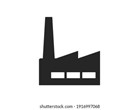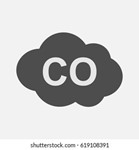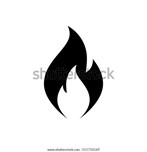There are different energy efficiency expectations depending on the type of use of the building. These types include:
 |
 |
 |
| Residential | Commercial | Industrial |
There are a lot of risks that occupants face when inside buildings. Below are three major risks that you must familiarise yourself with to be able to come up with procedures to minimise the risks.
 |
 |
 |
| Poisoning | Carbon monoxide | Fire hazard |
Buildings are considered secure spaces in general. However, the potential for problems with indoor air quality, workplace accidents, exposure to dangerous materials, and accidental falls require architects to ensure protection for occupants. Instead of depending on personal protective equipment and protocols to avoid mishaps, building designs must concentrate on minimising or avoiding threats to staff. For occupants in houses, below are three safety considerations.
 |
 |
 |
| Hazards | Occupational injuries | Falling from heights |
The Standard, AS/NZS 5141 Residential heating and cooling systems- Minimum applications and specifications for energy efficiency, performance and comfort criteria, was developed with the joint effort of industry leaders, consumer advocates, regulators and technical experts. The purpose of the revisions is to increase the performance of systems after implementation, helping to maintain the energy efficiency of the manufacturer after installation.
Air Sealing: The practice of installing appropriate materials, such as caulk or foam, to stop airflow in certain areas of a home.
Building Envelope: The assembly of elements comprising the exterior enclosure of a building, including walls, roof, foundation, windows, and doors.
Climate change: A change in global or regional climate patterns, in particular a change apparent from the mid to late 20th century onwards and attributed largely to the increased levels of atmospheric carbon dioxide produced by the use of fossil fuels.
Double glazed windows: Double glazed windows are closed units made using two pieces of glass which are separated by an air gap of at least 12mm. 2. The gap is sealed, and acts as a break between the inside and outside pieces of glass. The air gap is filled with gas which increases the insulation between the glass pieces.
Embodied energy is the energy used by all the processes associated with building construction, from natural resource extraction and processing to production, transport, and distribution of goods.
Energy Efficiency: The concept of using less energy to provide the same service.
Geothermal energy: Geothermal energy is a type of renewable energy taken from the Earth’s core. It comes from heat generated during the original formation of the planet and the radioactive decay of materials. This thermal energy is stored in rocks and fluids in the centre of the earth.
Global warming: A gradual increase in the overall temperature of the earth's atmosphere generally attributed to the greenhouse effect caused by increased levels of carbon dioxide, CFCs, and other pollutants.
Greenhouse Gas: A gas that traps the sun’s heat in the atmosphere. When these gases are trapped in the atmosphere (and not reflected back into space), the planet becomes warmer than it would be otherwise. This process is commonly referred to as the greenhouse effect. Greenhouse gases include water vapor, carbon dioxide, methane, ozone, chlorofluorocarbons, and nitrogen oxides; gases which are produced and sometimes released to the atmosphere when generating energy to power our homes.
Heat pump: A device that transfers heat from a colder area to a hotter area by using mechanical energy, as in a refrigerator.
Home Performance: The systematic approach to improving the comfort, health, safety, energy efficiency, and durability of a home.
HVAC: The equipment, distribution system and terminals that provide, either collectively or individually, the processes of heating, ventilating or air conditioning to a building or portion of a building.
Indoor Air Quality: Attributes of the air inside a building (indoor climate), including gaseous composition, humidity, temperature and contaminants.
Insulation: Insulation materials run the gamut from bulky fiber materials such as fiberglass, rock and slag wool, cellulose and natural fibers to rigid foam boards and sleek foils. Bulky materials resist conductive and, to a lesser degree, convective heat flow in a building cavity. Rigid foam boards trap air or another gas to resist conductive and convective heat flow. Highly reflective foils in radiant barriers and reflective insulation systems reflect radiant heat away from living spaces, making them particularly useful in cooling climates. Other less common materials such as cementitious and phenolic foams and vermiculite and perlite are also available.
Passive design: Passive designed homes reduce the need for mechanical heating and cooling and take advantage of the natural climate to maintain thermal comfort, delivering the following benefits:
- Significantly improved comfort.
- Reduced or no heating and cooling bills.
- Reduced greenhouse gas emissions from heating, cooling, mechanical ventilation
- and lighting
Renewable Energy Technologies: Technologies that produce sustainable, clean energy from sources such as the sun, the wind, plants, and water. These include biomass, geothermal, hydrogen, hydropower, ocean, solar energy, and wind.
Solar energy: The radiant energy from the sun that can be converted into other forms of energy, such as heat or electricity.
Thermal bridge: A thermal bridge, also called a cold bridge, heat bridge, or thermal bypass, is an area or component of an object which has higher thermal conductivity than the surrounding materials, creating a path of least resistance for heat transfer.
Ventilation: The process of "changing" or replacing air in any space to provide high indoor air quality.
